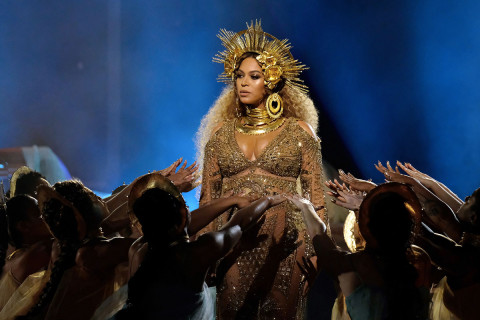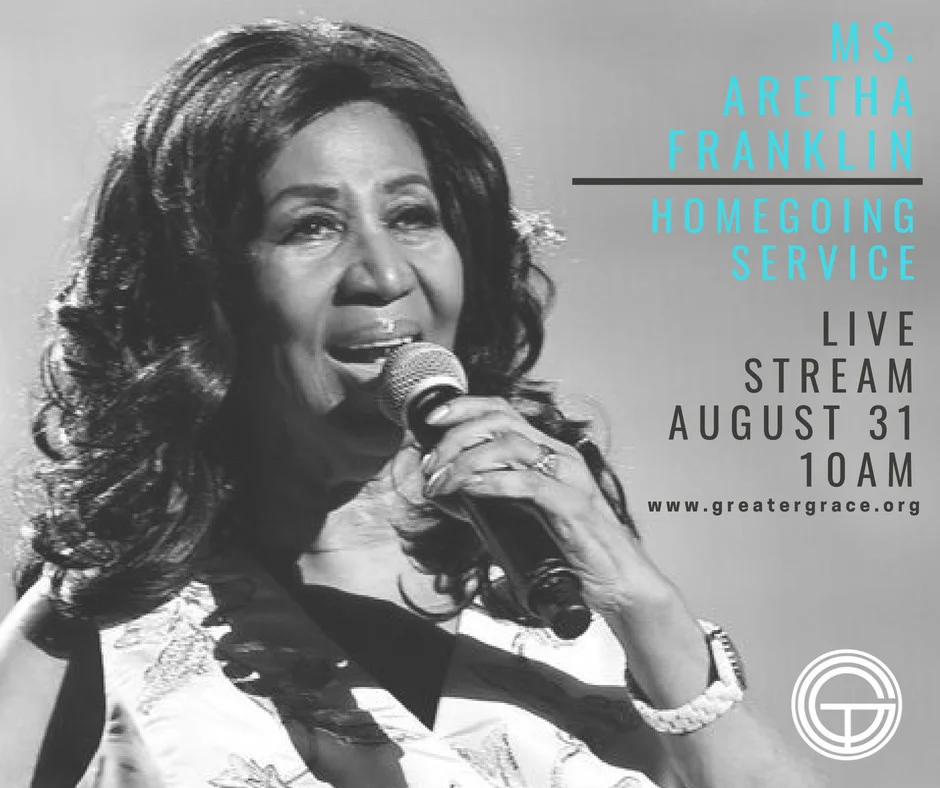Popular Religion and Participatory Culture Conversation (Round 6): Brandy Monk-Payton and Patrick Johnson (Part 1)
/Brandy Monk-Payton:
I’m so excited to be part of this series of discussions with Patrick! Thanks to Diane, Sarah and Henry for the invitation. My research is located at the intersection of Media Studies and Black Cultural Studies. Specifically, I am working on a manuscript emerging from my dissertation that explores the aesthetics and politics of Black celebrity across television and digital media. I’m especially interested in logics of public exposure and the construction of racial notoriety.
A sense of religion has always undergirded our experience with stardom. The title of Richard Dyer’s seminal book Heavenly Bodies: Film Stars and Society(1986) references the godlike quality that we attribute to screen personalities. While I am not a scholar of religion, I often think about fame in relation to the act of worship. It’s a topic that dovetails with Kathryn Lofton’s useful book on Oprah Winfrey. In Oprah: Gospel of an Icon(2011), Lofton examines how Winfrey’s image and brand are predicated on popular forms of spiritual empowerment. Participatory culture here transforms into a commercial experience of reverence towards a divine figure.
Enter Beyoncé Knowles. Now I’m not inclined to get into debates about the beloved pop star, lest the Queen Bey’s very vocal Beyhive (her community of most devoted fans) begins to buzz. Yet it seems that Knowles exemplifies celebrity worship and, even more so, a particular type of Black celebrity worship.
Rachel Kaadzi Ghansah writes about her pilgrimage to a Beyoncé concert: “I am not a Beyoncé fan but I felt like crying tears of joy all three times I saw the Mrs. Carter show. Because while other pop stars may sing about throwing some glitter on it and making it rain, only Beyoncé could literally soar over us, climb up over our heads and our real lives, climb over her kingdom, to actually throw down over us what looks like bits of pollen, golden confetti, and make it rain bits of her dream all over her fans who love her so, and who would do anything for their Queen.”
I have never been to one of her concerts, but I know many people who have, who describe it in some way, shape, or form, exactly like the above. Indeed, Beyoncé has devoted followers in her “kingdom” and on the face of it, this is no different from any other adored musical artist. Yet this icon, this Black icon, carves out a sacred space in the public imaginary with every performance. I’m reminded of her April 2018 appearance at Coachella (coined “Beychella”), which turned the site into a large-scale HBCU football halftime show. That performance included a rendition of the Black national anthem “Lift Every Voice and Sing.”
While her appeal is widespread, I would argue that she mobilizes histories of Black expressive culture in order to generate collective memory amongst her African American audience. The interaction between Beyoncé and her fans resonates in terms of folk traditions as epitomized by the Black church.
The discourse of racial iconicity hinges on both veneration and denigration, per Nicole Fleetwood. It is the communal and oftentimes ritualistic aspect of the veneration amongst Black fans that I find most fascinating.
Patrick Johnson:
First of all, I would like to thank Henry, Sarah and Diane for putting together this series. I have really enjoyed learning about everyone's work. As a scholar whose research does not explicitly engage religious studies, these conversations have been particularly fruitful for helping to expand the terms in which I understand my scholarship. My work sits at the nexus of television studies, Black cultural studies, and education. My dissertation looks at how 1990s Black sitcoms such as Martin, The Fresh Prince of Bel-Air, Living Single, A Different World,and Moesha function as a form of heritage and inheritance for Black millennials. I am broadly interested in understanding what the relationships between Black music cultures and television can tell us about Black cultural memory. I employ the concept of haunting to think through not only the resonance between Black media forms but the ubiquitous nature of the televisual past within Black popular culture.
One of the major points of intersection between my work and that advanced through religious studies are around issues of inheritance and collective memory. Most of my study's participants, who were between the ages of 18 and 24 at the time of the study, worked under the assumption that most Black people have some awareness of the aforementioned 1990s Black sitcoms. While participants had varying orientations to the programs (many with strong negative critiques of the shows, especially Martin's gender politics), they expressed feeling that they had to at least contend with them. Most of study's participants described inheriting their 1990s Black sitcom fandom from their grandparents, parents, or older siblings. The ability to be conversant in the shows, knowing the characters, catchphrases, and major storylines enabled them to participate Black cultural conversations that connected them to previous generations of Black folks. They understood their literacy in the shows as granting them access to both imagined and actual Black communities. This brings to mind a quote from a participant in Jonathan Gray’s study on The Simpsons who stated, “Even though I don’t watch this show, I don’t like this show, uh, I have to know about it to a certain degree…otherwise I will be excluded from the conversation of my friends” (p. 71). In this sense, I wonder how might religious studies help us think through the fandoms that can almost be read as compulsory.
The Black church has been a central institution in Black life. As a result, there is a certain literacy that many Black people have with the Black church regardless of their religious affiliation. Beyond the Black cast, the Black church is often employed in Black sitcoms as one of the many signifiers that connotes Blackness to the audience. The success of scripted shows like OWN's Greenleafand Bounce's Saints and Sinners as well as reality shows such as the Preachers franchise, proves that there is an appetite for programming that centers the Black church within its narrative structure.
However, as I think about the convergence of religion, participatory culture, and Blackness, the Queen of Soul Aretha Franklin's homegoing service is perhaps the show that cogently brings together these elements. The service with all it's pageantry provided space for Black people to collectively laugh at some of the ridiculousness that took place. Through social media and our offline discussions, Black people engaged in what Beretta Smith-Shomade (2016) describes as playful piety. Our running commentary on fashion choices, singing ability, and audience reactions should not be read as incongruent with religiosity but instead reflecting a means through which we "enjoy the foibles, fallacies, contributions, and even grace of black religious ways of being" (p. 321). This infusion of humor was part of celebrating Aretha Franklin's life and achievements.
I am interested in any site where multiple eras of Blackness come together, and the homegoing service would definitely qualify as such. Haunting has been useful for thinking about the “always thereness” of not only certain figures and cultural artifacts but the seemingly antiquated ideologies that continue to resound in the present. We can look at the service and think about Bishop Charles E. Ellis III’s interactions with Ariana Grande or Rev. Jasper Williams’ rebuke of Black Lives Matter and understand them as representing regressive ideologies that linger when left unconfronted. However, the mediated and spectacular nature of the service ensured that their problematic behavior and statements would not remain within the confines of the sanctuary. Rather their actions were subject to scrutiny by Black folks in real-time via social media.
Patrick Johnson is a Ph.D. candidate in the Social and Cultural Studies program in the Graduate School of Education at the University of California, Berkeley. His research interests include critical media literacy, Black fan studies, cultural memory, and the residual circulation of past media.
Brandy Monk-Payton is an Assistant Professor of Communication and Media Studies at Fordham University. Her research on theories and histories of African American media representation and cultural production has been published in the journals Film Quarterly, Feminist Media Histories, The Black Scholar, and Reconstruction: Studies in Contemporary Culture. Other work has appeared in various edited collections and is forthcoming in the anthology Unwatchable(Rutgers University Press). Her first book project examines Black celebrity in late twentieth and early twenty-first century U.S. public and popular culture.



